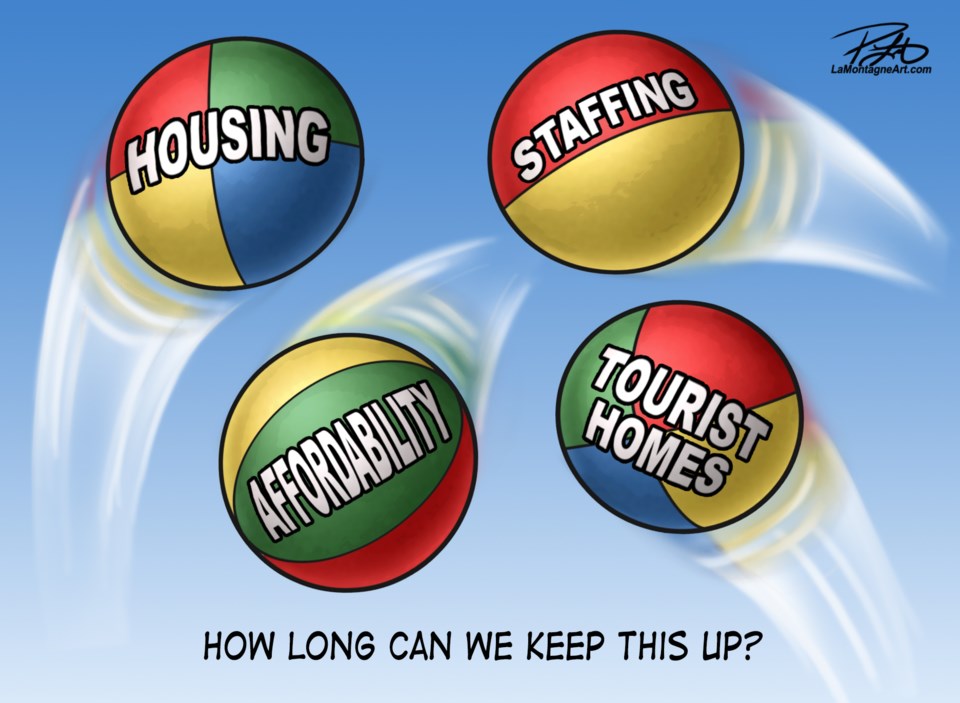Collaboration, communication and consultation are key in any dialogue.
It doesn’t mean each side is going to get exactly what they want, but it also doesn’t mean there has to be a winner and loser in each discussion.
In the existing debate over employee housing in the light industrial area of Canmore, lines have firmly been established between the Town of Canmore and business owners.
In one corner, the Town has concerns about enforcement for any employee housing units remaining as such over time, and that it could create a socio-economic issue for workers of different income levels being separated from one another.
Businesses, on the other hand, argue the desperate need for housing not only has them losing revenue due to staff shortages, but also threatening their ability to operate.
The past 14 months have only exacerbated the situation and evolved into a conflict that could have been avoided had it not been allowed to persist. And as with any tumultuous situation, the road back is always more difficult to repair than it was to tear up.
While the two sides have had disagreements hit Canmore Planning Commission and Subdivision and Development Appeal Board – with each hearing getting more antagonistic – the missing piece is finding a way for the two sides to come together to create regulations where something could be feasible.
It’s the worst kept secret that the lack of housing is the biggest concern not only in Canmore, but the majority of communities across Canada, North America and the world.
The public and private sectors want to solve the issue for a multitude of reasons, and resources have been dedicated, but it takes working with one another to find a path forward.
The Town of Banff long ago went through its process of employee housing located in the industrial compound, ultimately allowed in 2002. Since then, the Town has worked with potential developers and established regulations.
Banff’s 2014 housing strategy further cemented the potential for housing in such an area, particularly with its limited land base and redevelopment as the only option for new housing. An area redevelopment plan in the coming years will further address such opportunities for housing and address the isolation from the townsite.
Banff is also blessed with Parks Canada’s need-to-reside regulations offering a level of protection not afforded to all but a few communities in the country.
With businesses, developers and Town of Canmore planning staff largely referring to the same documents in the Municipal Development Plan, the land use bylaw, the 1994 Indian Flats area structure plan and council’s strategic plan, clarity is needed on the issue.
Council’s strategic plan and the housing action plan are clear in the need for adding housing in the community, but a municipality isn’t designed to take on the brunt of building housing – ultimately designed to be done by the private sector – and provincial regulations limit what can and can’t be done at the local level.
When these situations arise, it’s easy for different groups to dig in their heels and refuse to budge.
The real difficult part is actually working with one another to find what can work for each individual group and how to best mitigate the concerns of others.
It may ultimately mean that nothing comes of such efforts or a silver lining could be reached that would benefit all parties.
There is a path forward, but it takes willing partners.




